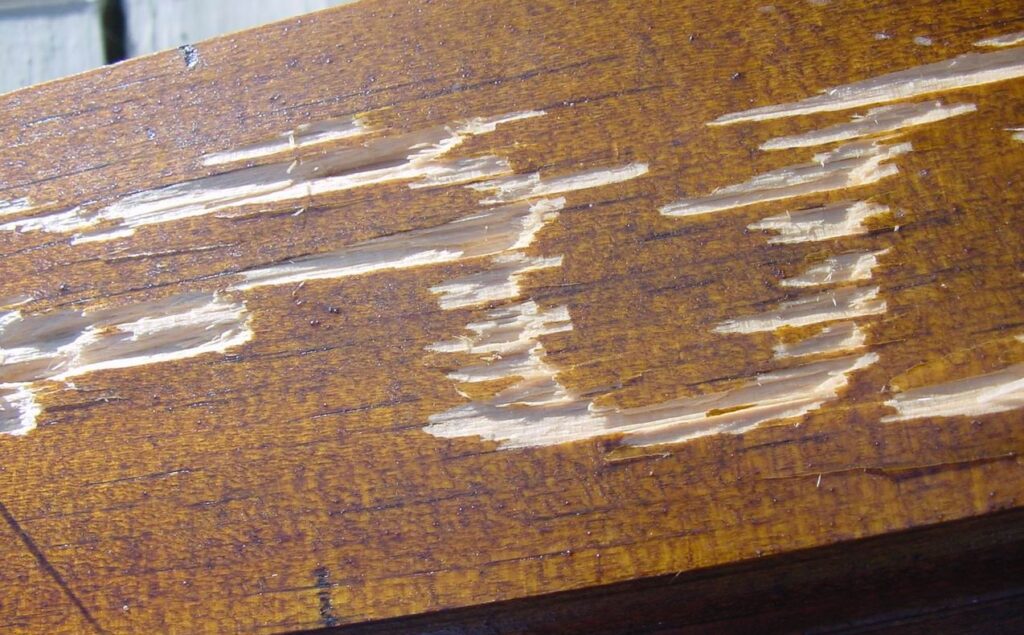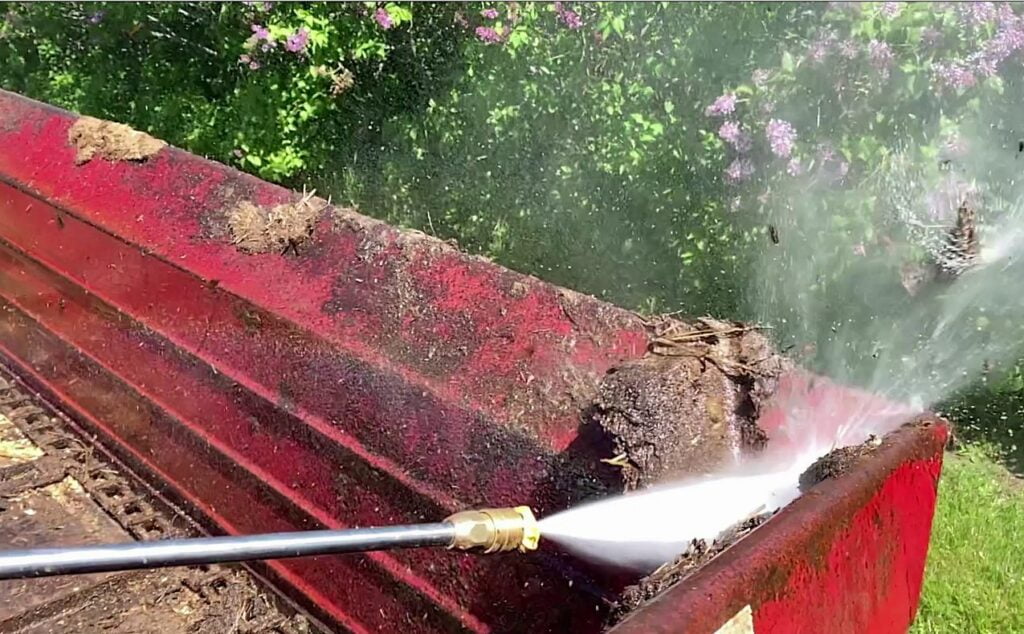Pressure washing is a popular home maintenance activity because it cleans brick, siding, decks and machinery thoroughly and in record time. I have used pressure washers for more than 25 years on a variety of surfaces so I know what can go right, but also what can go wrong. Here is my list of the eight most common pressure washer mistakes homeowners make.
8 common pressure washer mistakes
#1 – Using the wrong nozzle
Nozzles fit on the end of the power washer spray wand and they determine the shape and intensity of the spray pattern. There are three main types of nozzles: fan has the widest spray pattern, flat has a more concentrated spray pattern and needle point is the most focused of all.
The fan nozzle has the largest opening and is used for large areas that you want to cover in a short time or for applying liquid soap if your pressure washer has an on-board reservoir. You can also use the fan nozzle on siding, decks and driveways.
For brickwork, you’ll find a flat nozzle works best. It delivers fairly concentrated cleaning action, but not so intense that it will hurt the brick.
For surfaces that are resistant to damage and in need of heavy cleaning, the narrowest angle nozzle works best. Always carefully test any surface with the spray nozzle a couple of feet away at first.

#2 – Failure to inspect and clean the inlet filter regularly
Power washers typically have a small screen filter in the fitting where the garden hose connects. This filter is to protect the pump from debris, but it also needs to be kept clean for proper water flow into the power washer. It only takes a second to look at the screen before connecting the garden hose, cleaning if needed.
#3 – Not using enough water when power washing wood surfaces
Power washers remove dirt by knocking it off surfaces, but unless that dirt is also washed off and away by water, it will still be there when the surface dries. This is an issue particularly on horizontal surfaces like decks.
Always make sure to power wash long enough and with enough water to carry all dirt away from the surface. Dirt, mould and mildew will not be completely removed without sufficient water flow over the surface and onto the ground.

#4 – Using too much pressure when cleaning decks
It’s easy to damage wood surfaces with too much water pressure. The most common type of damage involves chunks of wood torn from the surface. That’s what you can see above.
Use a wide nozzle and begin pressure washing with the nozzle tip 24 inches (about half a metre) away at first. Decrease this distance only after testing in an inconspicuous place and examining the area after it has dried. Minor damage is impossible to see when the wood is wet.
A certain amount of fuzziness of wood is normal once the surface has dried after pressure washing. A quick sanding with an 80-grit abrasive will solve this problem.
#5 – Using too much pressure when cleaning bricks
Sure, bricks are much tougher than wood, but don’t over-estimate them. Excessive water pressure and too close of a nozzle position can damage mortar joints and bricks, especially older bricks.
As with wood, proceed carefully and be sure to test and inspect the brick surface for damage. Only dry brick will show minor and moderate damage.
#6 – Getting power washing chemicals in areas you don’t want them
This sounds like more of a danger than it is, so don’t panic. Simply be sure to follow all manufacturer’s instructions for soap and detergent. Some products such as bleach should not be mixed with certain cleaning agents, so make yourself aware of any potential dangers ahead of time.

#7 – Relying entirely on pressure washing
Sometimes pressure washing alone is not enough to get surfaces clean. As unlikely as it sounds, scrubbing with a soft brush as part of the power washing process is often necessary for cleanest results.
I use a long-handled brush with a hose connection for this. It works well after an initial power washing and before a final rinse with a power washer.
#8 – Not using enough soap or detergent when cleaning
If your pressure washer has a soap reservoir, be generous when applying any kind of cleaning chemical to surfaces, and let it sit for a few minutes for maximum effect before rinsing off. This will help loosen mould and grime so that subsequent passes with the power washer work better.

